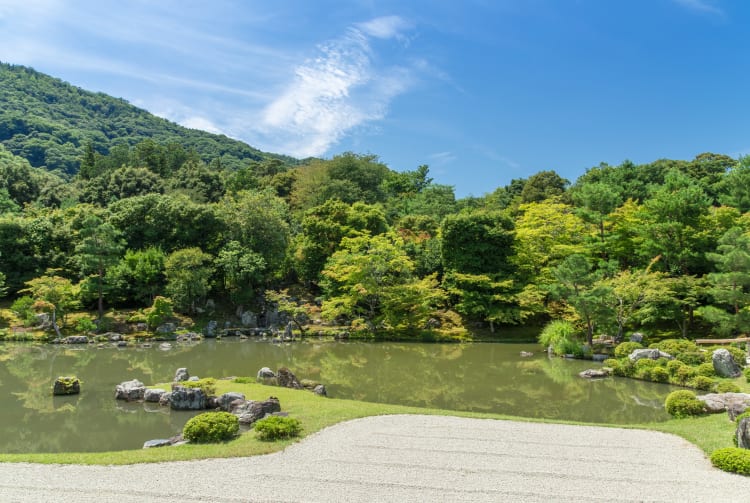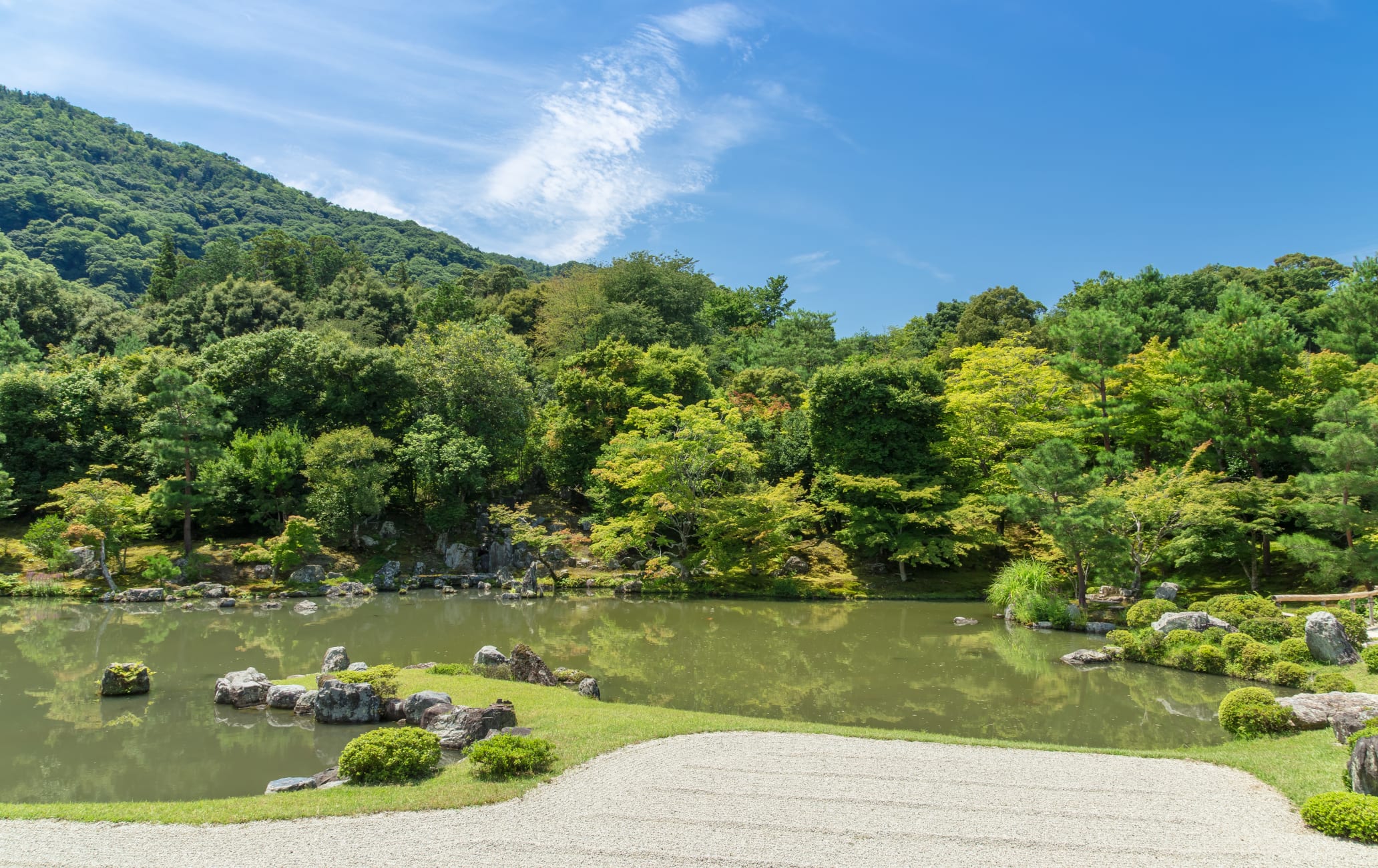The garden of Tenryuji is a fine blend of aristocratic tradition and Zen culture
Built in 1339, Tenryuji Temple was once an enormous temple complex that comprised more than one hundred sub-temples. Today, only a few structures remain. The prime reason to visit is for the garden, one of the finest examples of traditional Japanese garden design.
Don't Miss
- The Michelin-starred Shigetsu, a Zen vegetarian restaurant within the temple grounds
- Sub-temples Hogon-in and Kogenji, which are only open to visitors for a limited time in spring and autumn
How to Get There
Tenryuji is just two minutes from Arashiyama Station on the Keifuku Line.
The first head of this once majestic temple was a noted priest by the name of Muso Soseki. He is given credit for creating the garden, which is centered around a large pond and designed to reflect the changing seasons. The scenery of two nearby hills, Kameyama and Arashiyama, form part of the garden's composition. This technique of making use of the surrounding landscape in garden design is known as shakkei.
Among the gardens designed by master gardener Muso Soseki, this garden is believed to be the least changed and is considered one of the most exquisite of Japan's traditional landscaped gardens.


























































